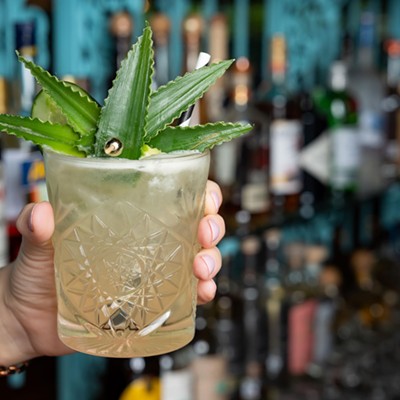"When I was younger," said Chilean winemaker Felipe Tosso last night at an intimate tasting of his wines at Churrascos, "I made big and bold, intense, tannic wines. But now that I'm older [in his early 40s] and now that I'm a father and more mellow, I make more food-friendly wines. I want to have fun drinking my wines."
I rarely accept invitations to tastings like the one held by Tosso last night. But at the urging of a wine colleague from New York, I was inspired to attend.
"You might find that they surprise you," she told me.
As a lover of traditional-style Italian and French wines and an unabashed fan of the new wave of low-alcohol, high-acidity wines from California, Chilean wines generally fall out of my comfort zone. In my experience, winemakers in Chile have favored the type of wine that Tosso made, by his own admission, in his youth: Highly tannic and alcoholic (with alcohol volume that often exceeded 14 percent) wines with concentrated, bold fruit flavors. But a desire "to taste outside of my box" and the nudging of a colleague prompted me to fight traffic and head up to Churrascos at the end of my workday yesterday.
Because of its cooler climate, its alluvial (i.e., pebbly and stony) soils, and abundance of river valleys and their slopes, Chile is often referred to as the Bordeaux of South America. Over the last two decades, the country's wines have been marketed to Americans as value-driven expressions of French grape varieties.
"Cabernet Sauvignon, Merlot-Carmenère, and Cabernet blends dominate Chile's red wine exports and can provide extremely good-value wines for drinking within two or three years," note the editors of Jancis Robinson's Oxford Companion to Wine.
So I was surprised when Tosso poured me his Viña Ventisquero 2012 Pinot Noir Grey, a vineyard-designated expression (Las Terrazas) of young-vine Pinot Noir, the great red grape of Burgundy, a variety that I had never seen in Chilean wine.
To my pleasant surprise, the wine had bright, vibrant acidity, balanced alcohol (around 13.5 percent, he said), and confident but easy-going red fruit and berry flavors. I liked the wine a lot and it paired well with a beef empanada, slicing through the gentle fattiness of the savory pastry while not overwhelming it.
As leading Houston wine bloggers Amy Gross, Sandra Crittenden, and I tasted the flight of Viña Ventisquero wines (some of which are not currently available in Texas), I was impressed with the over-arching balance and restraint of the bottlings.
Even the Cabernet Sauvignon -- which you can find in Houston for under $25 -- had good balance, was fresh and clean on the nose and on the palate, and had earnest but tempered red fruit and earthy flavor. It's not a bottle that I would have normally reached for on a supermarket shelf. But I was impressed by the extreme value that it represents for a Cabernet Sauvignon lover who likes to drink wine at dinner (and not solely as a cocktail).
I also liked the Sauvignon Blanc, which showed lovely aromatics and freshness as well. It was a great match for my Ensalada Caesar.
My friends and colleagues Amy and Sandra couldn't help themselves from teasing me.
We never see you drink anything but Italian, they said.
But I guess that now that I'm my forties and I'm a dad, it's time for me to grow up (and mellow out) as a wine drinker. Just like Chilean wine...
Viña Ventisquero wines are available at Whole Foods in Sugarland, H-E-B on Northwest Freeway in Cypress, and Woodlands Liquor on College Park Dr.






